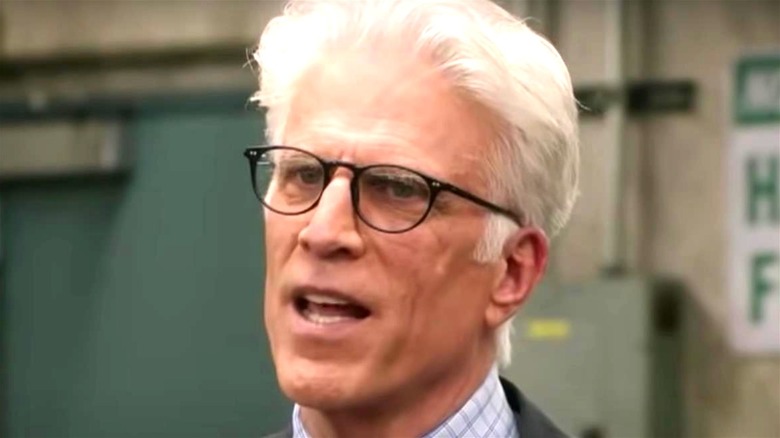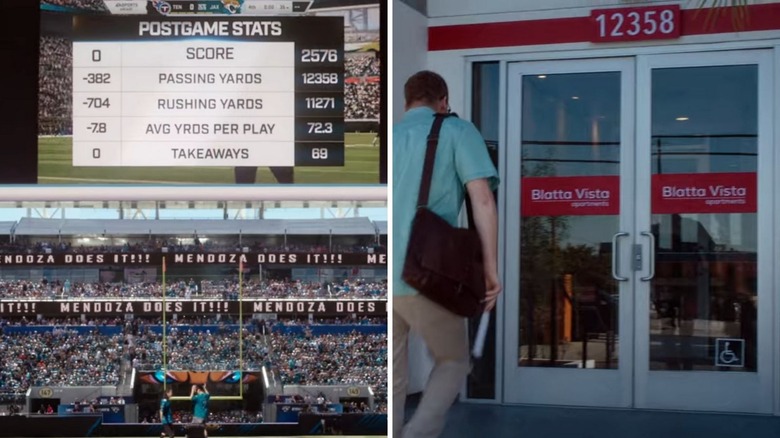The Fibonacci Reference You Probably Missed In The Good Place
"The Good Place" is rife with details you'd only ever notice after watching it more than once. The Season 1 finale, when the clever ash-hole Eleanor (Kristen Bell) — spoiler alert — realizes that they're actually in The Bad Place, is a bombshell that reframes all 12 episodes that came before it. On top of that, the creators and production team sprinkled countless little details throughout the series that often serve as jokes or references, including a few sets of repeating numbers. Sharp eyes will notice that one such reference is the famed Fibonacci sequence.
As one of the most famous formulas in mathematics, the Fibonacci sequence is defined by a string of numbers in which the next number in the series is the sum of the two before it. This begins with 1, 1, 2, 3, 5, 8, 13, 21, and goes on to infinity. Its significance comes from the ratio between the numbers, aka the golden ratio, that is often represented by a spiral shape and seen in nature — some plants grow their leaves, petals, and pinecones according to it (via Live Science). Over the centuries, the sequence has become nearly mythical, which, as "The Good Place" creator Michael Schur put it, makes the numbers a "conspiracy theorist's dream."
The numbers repeat in the series as a little torture for the audience
A portion of the Fibonacci sequence is present in "The Good Place" right from the beginning, as Eleanor and the other humans are all living in Neighborhood 12358W — those are the second through sixth digits of the sequence. In "Chapter 12," the same numbers are lucky in Eleanor's horoscope. Finally, in the series finale, they show up again as Jason's number of passing yards in his perfect game of "Madden" and as the street address for Michael's apartment building on Earth.
These repeating numbers were, of course, very intentional on the part of the show's creators. "Numbers are very mystical things, right? And people read into them," creator Michael Schur said when discussing the Season 1 finale with Marc Evan Jackson (who plays the demon Shawn) on "The Good Place: The Podcast." He referenced the repeating number sequence key to the strange island on "Lost" as an example of this on TV, but decided to take the idea in a different direction on "The Good Place."
"It's a little tip of the cap to the idea that this is a torture chamber that is designed to make people go crazy," he said. Both Michael the character and Michael the showrunner put repeating numbers in the neighborhood and series simply to make the characters and audience read more meaning into them than there actually is. "We thought it would be fun if every time a number popped up, it were a number that would set off an alarm bell in a person who reads a lot of Reddit threads," Schur added.
It totally worked: There are Reddit threads on r/TheGoodPlace reading too much into the inclusion of the Fibonacci sequence.

